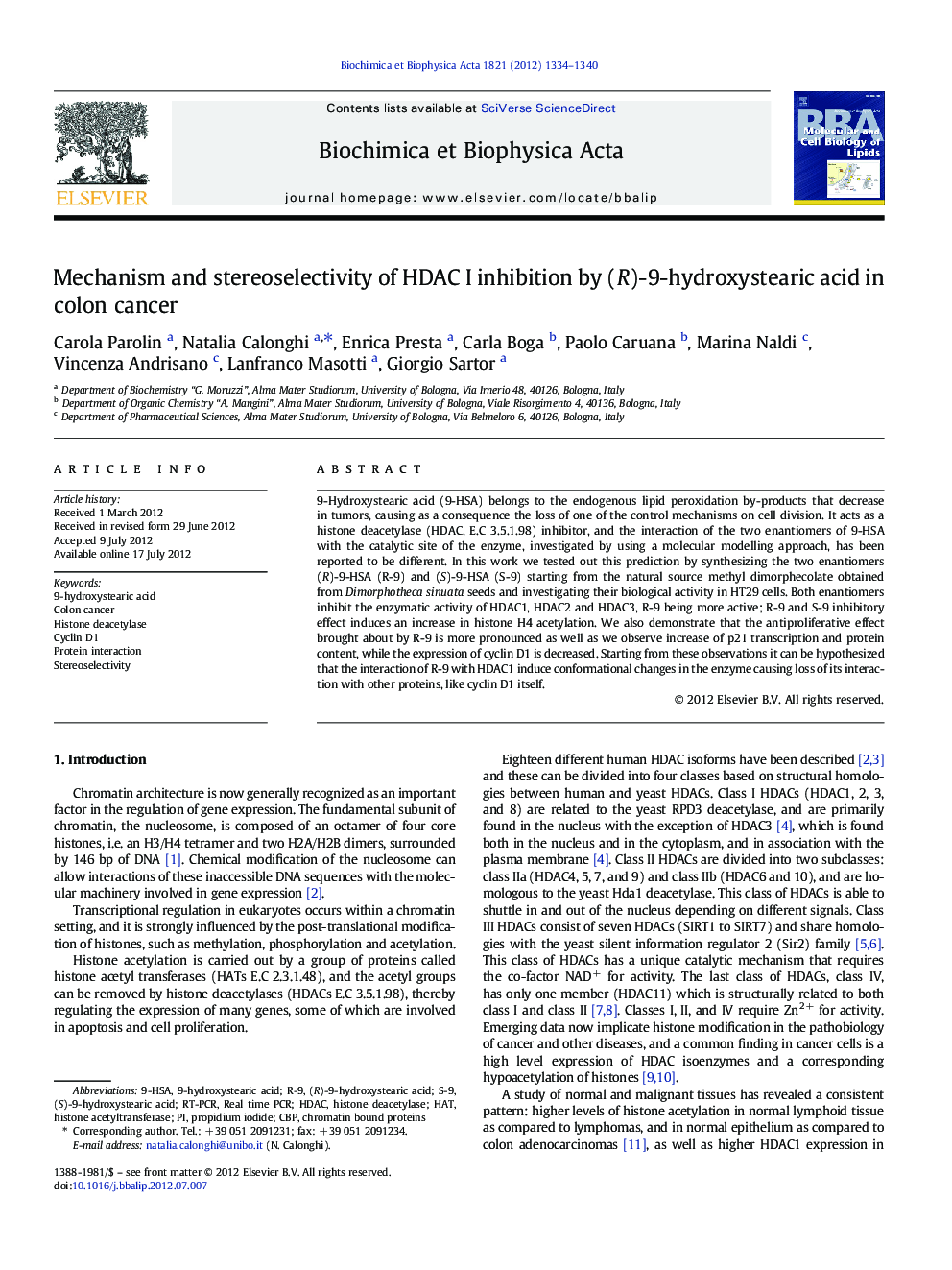| Article ID | Journal | Published Year | Pages | File Type |
|---|---|---|---|---|
| 1949341 | Biochimica et Biophysica Acta (BBA) - Molecular and Cell Biology of Lipids | 2012 | 7 Pages |
9-Hydroxystearic acid (9-HSA) belongs to the endogenous lipid peroxidation by-products that decrease in tumors, causing as a consequence the loss of one of the control mechanisms on cell division. It acts as a histone deacetylase (HDAC, E.C 3.5.1.98) inhibitor, and the interaction of the two enantiomers of 9-HSA with the catalytic site of the enzyme, investigated by using a molecular modelling approach, has been reported to be different. In this work we tested out this prediction by synthesizing the two enantiomers (R)-9-HSA (R-9) and (S)-9-HSA (S-9) starting from the natural source methyl dimorphecolate obtained from Dimorphotheca sinuata seeds and investigating their biological activity in HT29 cells. Both enantiomers inhibit the enzymatic activity of HDAC1, HDAC2 and HDAC3, R-9 being more active; R-9 and S-9 inhibitory effect induces an increase in histone H4 acetylation. We also demonstrate that the antiproliferative effect brought about by R-9 is more pronounced as well as we observe increase of p21 transcription and protein content, while the expression of cyclin D1 is decreased. Starting from these observations it can be hypothesized that the interaction of R-9 with HDAC1 induce conformational changes in the enzyme causing loss of its interaction with other proteins, like cyclin D1 itself.
► 9-hydroxystearic acid (9-HSA) inhibition of class I HDACs is strictly stereospecific. ► (R)-9-HSA (R-9), but not (S)-9-HSA (S-9), upregulates p21WAF1 and reduces cyclin D1. ► HDAC1 and cyclin D1 form a complex that binds chromatin. ► R-9, but not S-9, causes HDAC1-cyclin D1 complex dissociation.
